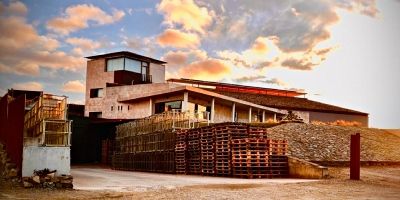| Type | Red wine |
|---|---|
| Region | |
| Grapes | |
| Producer | |
| Allergens | Contains sulfites |
| Alcohol contenti | 14.5% |
| Production | 16,000 - 19,000 bottles |

Álvaro Palacios Vi de Vila Gratallops
2022Spec sheet
The wine
A Vi de Vila (villages in the Burgundy hierarchy) is a wine produced using grapes emanating exclusively from one specific municipality; in this case, originating from the beautiful town of Gratallops. The Priorat QDO, following the path taken by the renowned French region, has been a pioneer in Spain as regards differentiating and identifying the origin of its wines. For Álvaro Palacios, the Gratallops wines must be mature, not very dark in colour, with radiance and suppleness, red fruit rather than black and bring out the slate soils with a rugged feel.
What does this wine taste like?
It’s a wine that’s very fragrant on the nose, with an abundance of fruit, touches of balsamic notes and distinct hints of slate and earthy dust. After a few minutes in the glass, liquorice, cherries and refreshing notes of sage, fennel and thyme appear. It comes over as open and elegant, intermingling flowers and nuts with Mediterranean herbs. It’s profound and voluminous on the palate, while still being fresh and juicy. There’s the feel of the soft pulp of the grapes coated in tannin, bestowing distinction. Its excellent acidity results in it proving very long and highlights its more mineral side.
Drinking and storing
It’s ripe for enjoyment following release, although it promises to continue on top form for up to 7-9 years after its vintage year.
It should ideally be served in a tall, wide goblet-type glass at a temperature of about 16 ºC.
Food pairing
Cuts of beef and lamb are the perfect companions, especially when grilled or pan-fried with aromatic herbs.

Ratings and awards
| 2024 | 94-96 PK | ||
|---|---|---|---|
| 2023 | 94+ PK | ||
| 2022 | 93-95 PK | ||
| 2021 | 95 PK | ||
| 2020 | 94+ PK | 95 SK | |
| 2019 | 94 PK | 95 PN | 95 SK |
Wine critics reviewsReviews by Parker and Parker
Customer reviews
Winemaking
It’s made primarily from Garnacha, a good dash of Cariñena (12-19% subject to the year) and 1-2% of white varieties such as Garnacha Blanca, Macabeo and Pedro Ximénez. Harvesting usually begins in September and ends around October 20th.
Once destemmed, the grapes are gently pressed. Alcoholic fermentation, by means of native yeasts, takes place in small wooden vats with periodic stirrings. Malolactic and subsequent barrel ageing (13-16 months) occurs in large French oak casks.
| Vinification material | Wood |
|---|---|
| Ageing period | Between 13 and 16 months |
| Type of wood | French oak |
Vineyards
Depending upon the vintage year, between 9 and 12 plots, all estate-owned and located in the same municipality, figure in the Gratallops blend. Plots with names like La Capella, La Font Nova, Carrerada, Coll de Falset, Aubagues and Manyetes, when their lands are added up, generate round about 10 hectares of vineyards, and always cultivated in accordance with organic farming methods.
The soils are bestrewn with slate (licorella), with northerly and easterly orientations; the altitude ranges between 300 and 430 metres. The vines are aged from 15 to 70 years old, and planted in different densities, anywhere between 5,200 and 7,700 plants per hectare. Yields vary from 12 to 14 hl/ha.
| Vine age | Between 14 and 70 years |
|---|---|
| Soil | Llicorella |
| Climate | Mediterranean |
| Orientation | North / East |
| Surface area | 8.00 hectares |
| Altitude | 400.00 meters |
The winery
Álvaro Palacios

Álvaro Palacios came to the Priorat in 1989, to the town of Gratallops to be precise, following the lead of a group of local producers fully intending to pass on through their wines all the character of this land, full of its own brightness, with the shining Mediterranean sun, the gleaming slate in rocky crags, and brightly-coloured fennel in the olive groves. This is mystic, spiritual country tracing back its past to the Carthusian monks, who worked at cultivating vines...
























